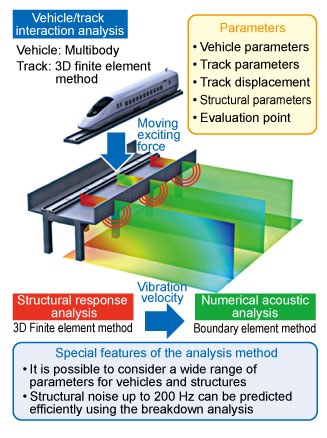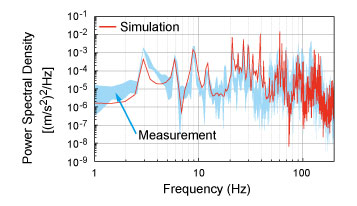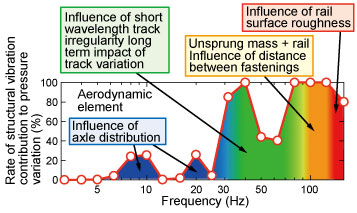5. Simulation of pressure variation caused by structural vibration
- A method was developed to estimate pressure variation due to structural vibration.
- By comparing estimated and measured results, insight was gained into the rate of structural vibration contribution to total pressure variation.
Trains running at high speed on open sections of railway line, cause trackside pressure variation, which in turn produces problems such as rattling of fittings etc.
It is known that there are two sources to this problem - aerodynamics and structural vibrations. In order to evaluate the problems arising from structural vibration source, a method was developed combining structural vibration analysis and acoustic analysis using a boundary element method (Fig.1).
In the structural vibration analysis, vehicle/track vibrations and structural vibrations were separately modeled and a system for conducting vibration analyses of individual components was built in order to effectively analyse the sources of structural noise. Measured values correlated well with structural vibration simulations (Fig.2). By using these results as an input item to the aforementioned boundary element method based acoustic analysis, it is possible to evaluate pressure variation caused by structural vibrations according to the conditions of the vehicle/track or structure being investigated.
Furthermore, by comparing simulated results with actual measurements of trackside pressure variation it was found that it is possible to identify the rate of structural vibration contribution to total pressure variationiFig.3j. This simulation technology is planned to be used for developing measures for reducing pressure variation.

Fig.1 Simulation of pressure variation
resulting from structural vibrations
Fig.2 Results of comparison between simulation output
of floor slab vibration and actual measured results
(train speed of 270 km/h)
Fig.3 Rate of structural vibration contribution
to pressure variation